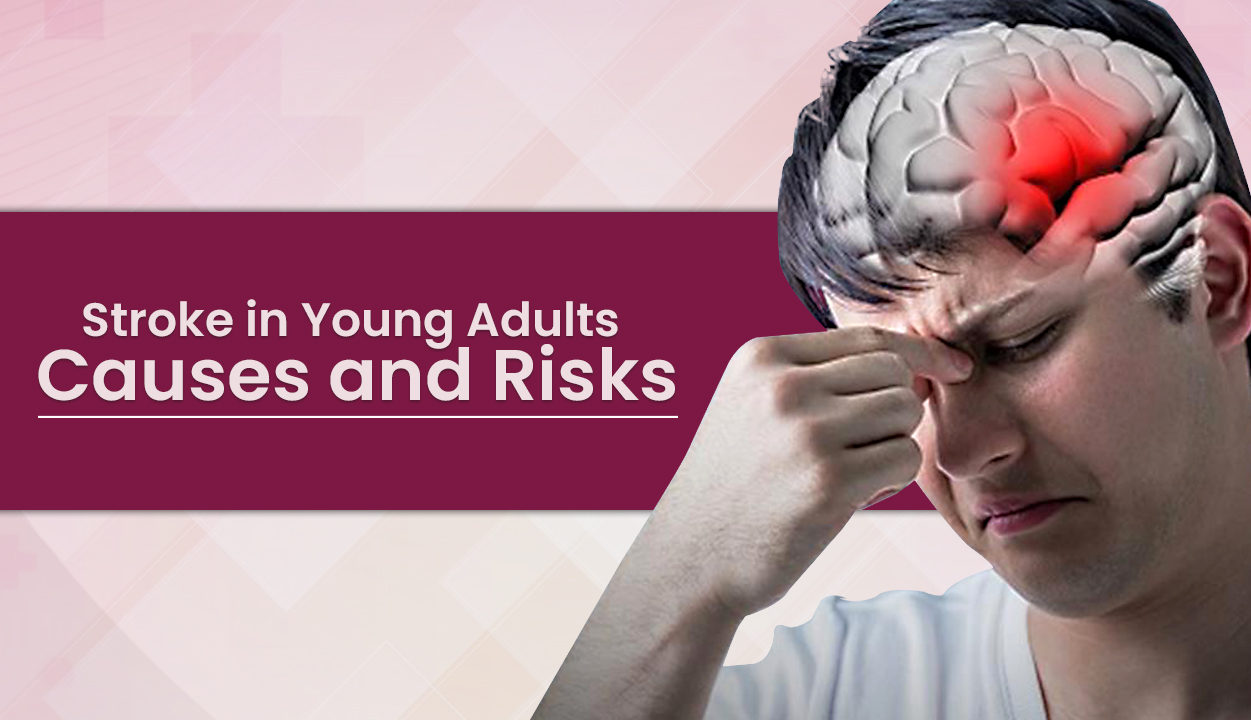
Stroke in Young Adults: Causes and Risks
Stroke, often seen as an ailment of the elderly, is increasingly affecting a younger demographic – young adults. In this blog, we’ll explore the stroke risk factors and causes, and steps for prevention of stroke in young adults, shedding light on the critical question: Is there a difference in stroke factors for this age group?
Understanding the Leading Causes of Stroke
Blocked Blood Supply (Ischemic Stroke): Young adults can also suffer from ischemic strokes, although it’s less common compared to older adults. The primary cause is atherosclerosis, where fatty deposits or plaque line and obstruct blood vessels supplying the brain.
- Burst Blood Vessel (Hemorrhagic Stroke): Hemorrhagic strokes occur when a blood vessel ruptures inside the brain, leading to blood leakage.
Major Stroke Risk Factors in Young Adults
More young individuals are experiencing strokes due to:
- Obesity: While not an independent risk factor for ischemic stroke, obesity can lead to complications like high blood pressure, increasing the risk.
- High Blood Pressure: Elevated blood pressure can burst or block arteries supplying the brain, and it’s associated with atherosclerosis.
- Diabetes: Diabetes doubles the likelihood of stroke, and its incidence is on the rise among younger individuals, with even children increasingly diagnosed with type 2 diabetes.
Other Stroke Risk Factors for Young Adults
Certain other stroke risk factors in young adults include:
- Viral Infections: Conditions like HIV can elevate stroke risk.
- Cardiovascular Issues: High cholesterol and cardiomyopathy (reduced heart muscle function) are risk factors.
- Contraceptives with Estrogen: The use of certain contraceptives can contribute to stroke risk.
- Pregnancy: Young women should be aware of stroke risks during pregnancy.
- Inflammatory Conditions: Diseases like lupus that cause inflammation.
- Genetics: A family history of stroke can increase susceptibility.
- Medications: Some medications, like blood thinners, may raise the risk of bleeding in the brain.
- Lifestyle Factors: Heavy alcohol consumption, smoking (including exposure to secondhand smoke), physical inactivity, and poor diets can all play a role in stroke risk.
Recognizing Stroke Symptoms
Stroke symptoms in young adults mirror those in older individuals. They include sudden numbness or weakness (usually on one side of the body), confusion, vision problems, severe headaches, and dizziness or loss of balance. Prompt recognition of stroke symptoms and immediate medical attention are vital, as early treatment can minimize damage and improve outcomes. Whether young or old, knowing these stroke symptoms can be the difference between life and disability.
Prevention Strategies for Young Adults
- Healthy Lifestyle: Incorporate regular exercise, manage medical conditions, and maintain a healthy weight.
- Vital Sign Monitoring: Regularly check blood pressure, cholesterol, and blood sugar levels.
- Balanced Diet: Opt for whole foods, limit sugars and saturated fats.
- Alcohol and Smoking: Moderate alcohol, quit smoking, and avoid secondhand smoke.
- Lipid Management: Balance triglycerides and HDL cholesterol levels.
Stroke is not exclusive to the elderly. By adopting a proactive lifestyle, young adults can significantly reduce their chances of falling victim to this debilitating condition. Recognizing the stroke symptoms well in time can reduce the impact of stroke and work in the favour of the patient. Hence, stay informed, stay healthy, and stay protected against stroke.
For any neurological or heart health concerns, meet our expert doctors at
Yashoda Super Speciality Hospital. Click the link below to book an appointment and receive
expert guidance: http://182.79.136.75:62/
